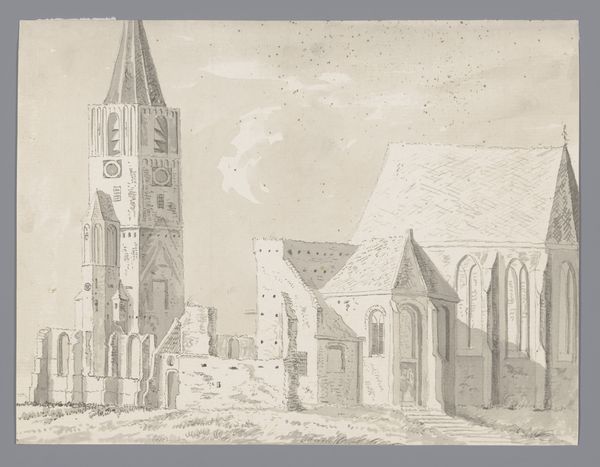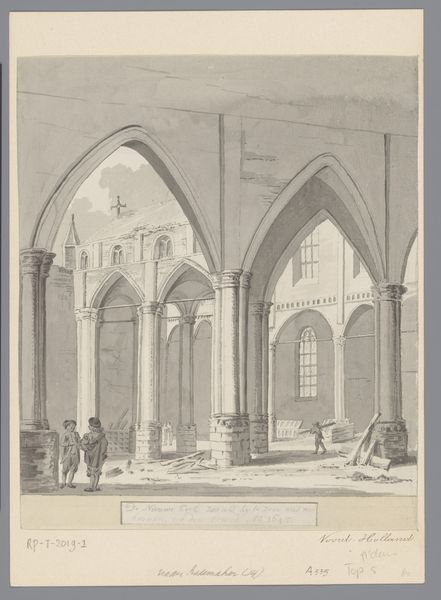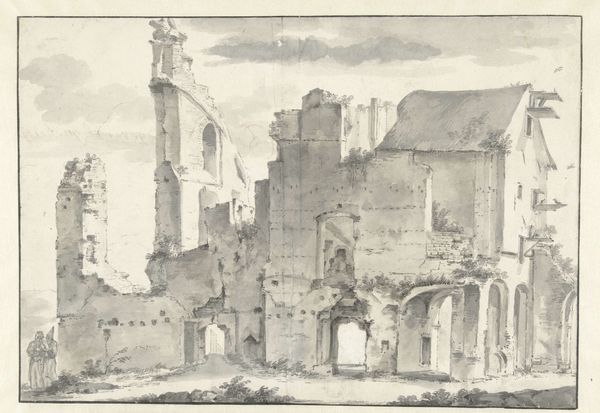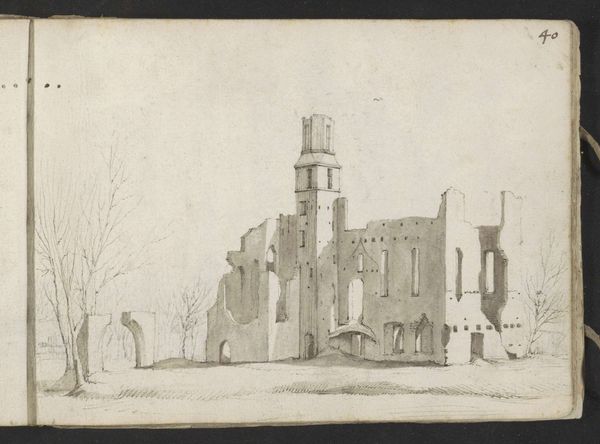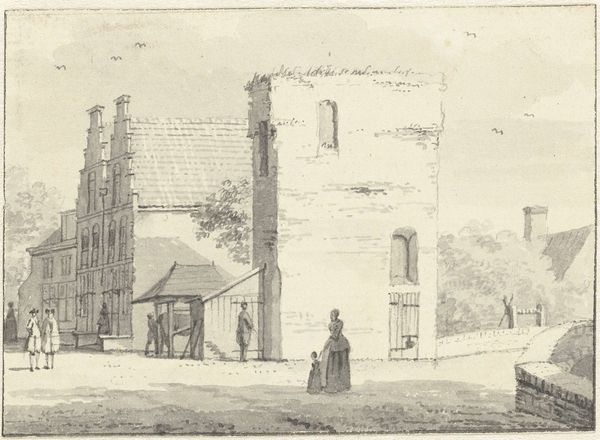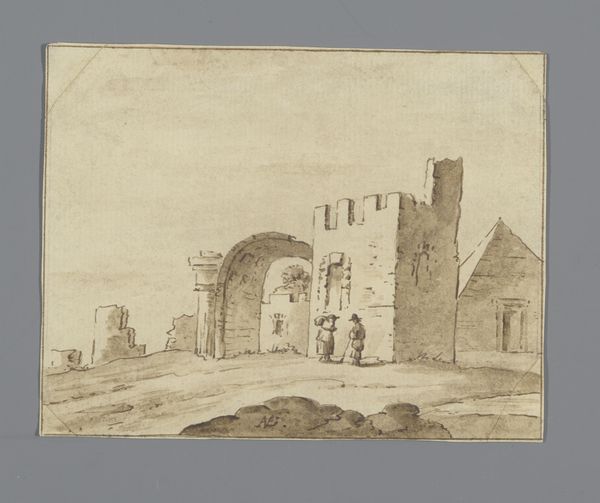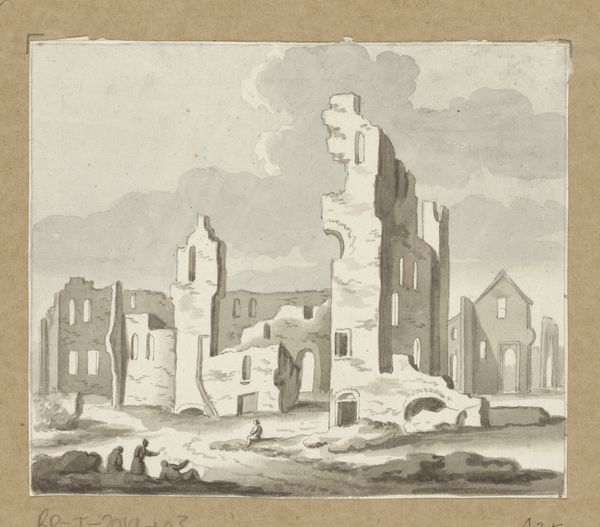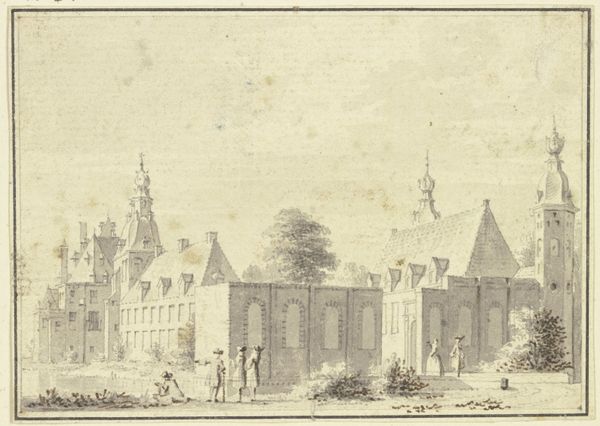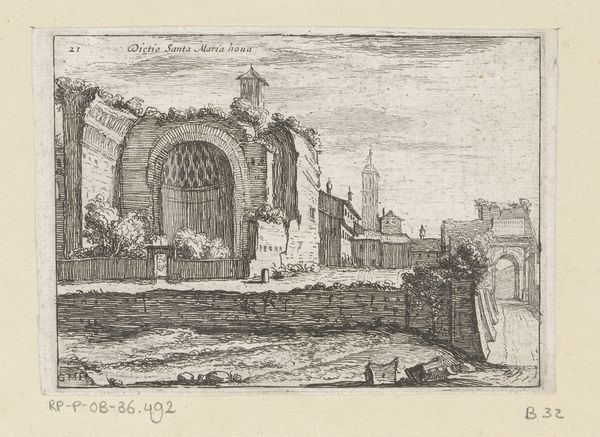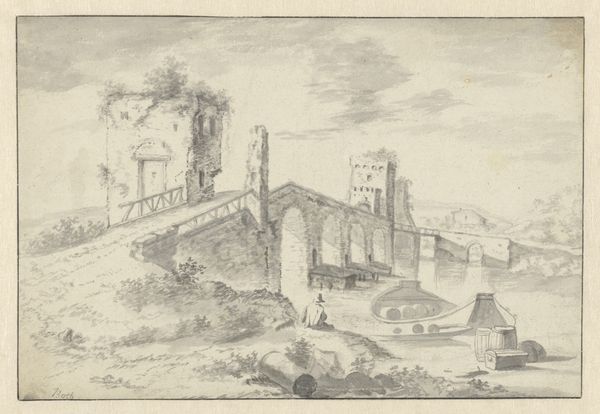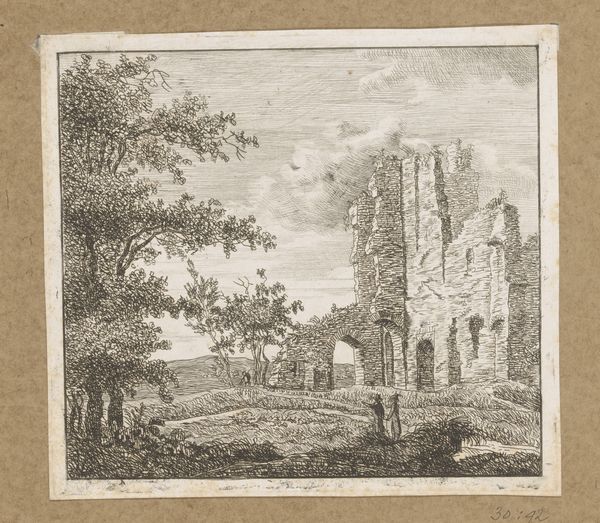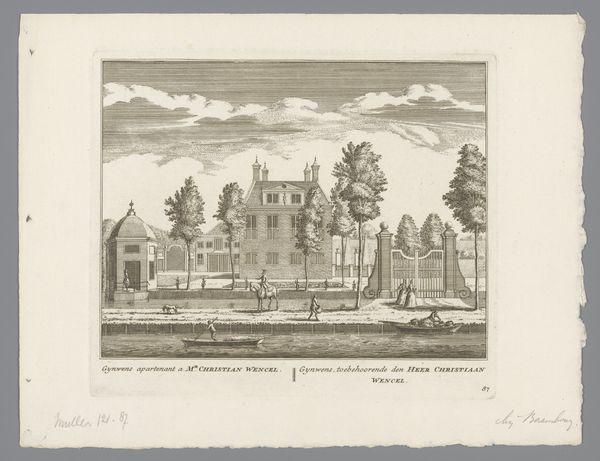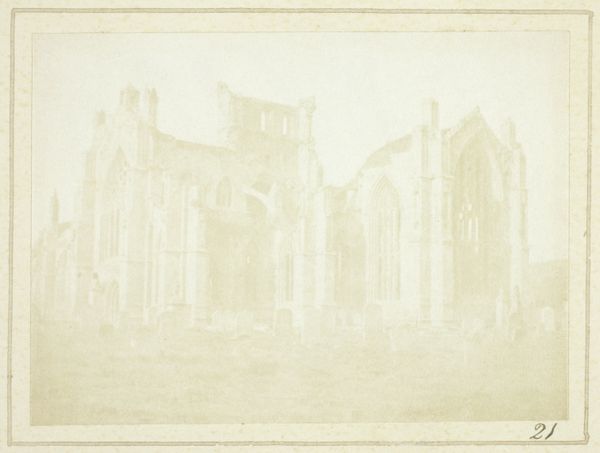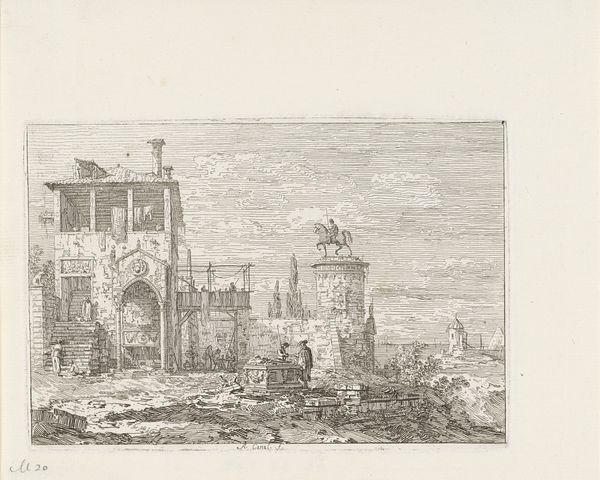
Gezicht op de ruïne van het koor van de Sint-Maartens- of Grote Kerk in Tiel c. 1725 - 1740
0:00
0:00
drawing, paper, ink, architecture
#
drawing
#
dutch-golden-age
#
landscape
#
paper
#
ink
#
cityscape
#
architecture
#
realism
Dimensions: height 111 mm, width 162 mm
Copyright: Rijks Museum: Open Domain
Editor: So this is Abraham Rademaker's "View of the Ruins of the Choir of the Sint-Maartens- or Grote Kerk in Tiel," dating from around 1725 to 1740. It’s an ink drawing on paper. I’m struck by the sort of somber feeling it gives off. What is your take on this work? Curator: It’s a powerful depiction of the ruin, certainly. But it's also a document of a very specific moment in Tiel's history. Ruins, in the Dutch Golden Age, weren't just seen as decay, but as potent symbols. What might those symbols communicate to the contemporary audience? Editor: I'm not sure. Loss, maybe? Or the passage of time? Curator: Yes, but more than that. Think about the political and religious landscape of the time. The Reformation had led to iconoclasm, the destruction of religious imagery. This drawing, depicting a ruined church, becomes part of a larger dialogue. What was the status of Catholicism at that time? How might seeing this image make citizens feel about the religious disputes occurring? Editor: Ah, so the ruin might symbolize a victory for the Protestant reformers, but perhaps also a commentary on the violence that accompanied it? And the little house inside adds another layer... like ordinary life continues even among the wreckage of history? Curator: Exactly. Rademaker isn’t just presenting a picturesque scene; he’s engaging with the political implications of this architectural ruin. It begs the viewer to consider the transformations of power and faith evident in the Dutch landscape. Does that understanding change your view of the 'somber feeling' you described? Editor: Absolutely! I see it as less about simple sadness and more about a complex relationship with the past and power, a visual representation of shifting cultural and religious landscapes. Curator: Precisely. Art provides insight to the way imagery participates in cultural and ideological work. Editor: I'll definitely remember to consider the wider political context next time!
Comments
No comments
Be the first to comment and join the conversation on the ultimate creative platform.
